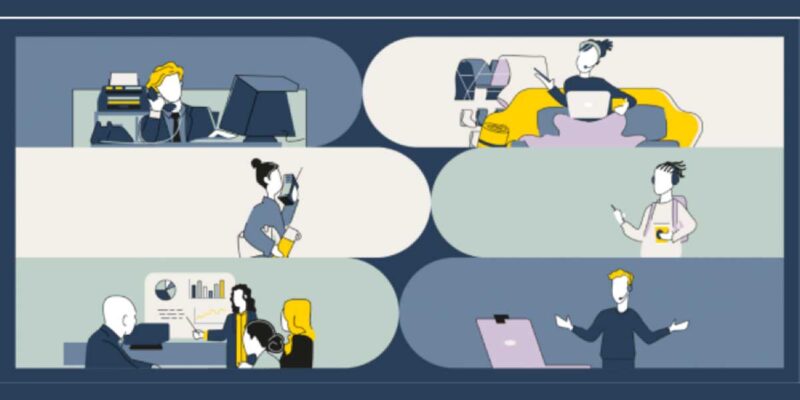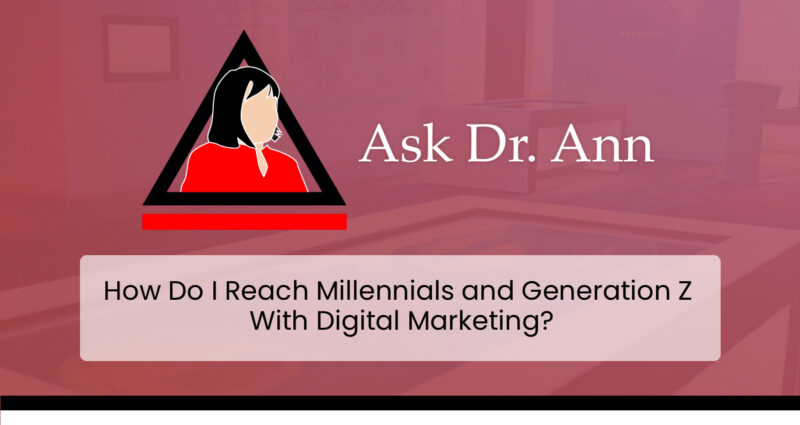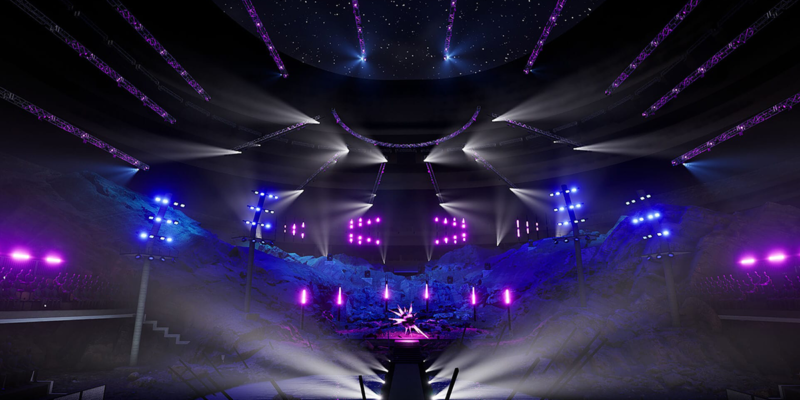Ask Dr. Ann: How Do I Create a Collaborative Space for People of Different Ages?

What’s the difference between building a collaborative space for a company with boomers versus building one for a company with a lot of millennials and Generation Z? Is there a difference in what should be included?
For the first time in history, there are five generations in the workplace. They are:
- Traditionalists — born 1925 to 1945
- Baby Boomers — born 1946 to 1964
- Generation X — born 1965 to 1980
- Millennials — born 1981 to 1995
- Generation Z — born 1996 to 2013
Millennials will soon be the largest living generation in the U.S. labor force, while the number of people 65 years and older is expected to nearly double. Digital technologies are changing how generations collaborate and work together.
A thorough analysis of 20 different studies with nearly 20,000 people revealed small and inconsistent differences in job attitudes when comparing generational groups. It found that, although individual people may experience changes in their needs, interests, preferences and strengths over the course of their careers, sweeping group differences depending on age or generation alone don’t seem to be supported.1
Technology Needs
Well-designed enterprise technology helps millennials and Gen Z perform better at work. When companies are able to tap into effective apps or software, productivity increases. This group of employees might start working on a document in the office, open it on their phone on the bus ride home, and pull it up again on their laptop while watching TV. They don’t have as much of a harsh delineation between work and home, and this could change the workplace even more in the coming years. They want modern, up-to-date technology that is seamless, portable and has easy connectivity regardless of the device used. They are used to multitasking and are fast learners. They want a hybrid work environment, but also a work-life balance where technology is turned off or ignored.
It is important to implement a seamless mix of technology for all generations to use. Despite the tech-savvy stereotype of millennials and Gen Z employees, don’t expect them to walk into any office and know how to utilize the software. They are used to using Instagram, Twitter and Snapchat, technology designed for the consumer, that can be quite different from corporate apps used for a variety of purposes including collaboration, invoicing and expense reporting. It is important to remember these young people have always lived in a connected world, and they are used to constant updates from dozens of apps. Switching between different tasks and paying simultaneous attention to a wide range of stimuli comes naturally to them.
The ease of texting or messaging others through online apps on smartphones, as opposed to calling over the phone, has had a huge impact on Millennial communications preferences. The best way to communicate with Millennial and Gen Z employees is reaching them through digital message apps, whether over the phone or computer. Personalizing and distributing content based on employee types and technology preferences will make workers feel more valued and drive feelings of inclusion. This will help drive productivity and employee satisfaction.
Once the content is in place, it is important to consider the distribution strategy and frequency in which content is shared. The workforce has become more connected with digital reminders, collaborative calendars and instantaneous updates. From intranet platforms to a variety of apps, each generation is finding applications and technologies better suited to their needs. Remember that every employee interacts with technology differently and it is important to find a balance of technologies to result in a unified organizational culture.
To be effective between age groups emphasize shared goals. People, young and old, can see themselves as part of the same team working towards the same goal. Focusing on common direction can reduce perceptions of “us” versus “them” by reinforcing a sense of “we”.
Collaborative Spaces
Collaborative spaces are needed in a variety of locations. If employees and customers are geographically dispersed, everyone can simultaneously contribute whether from a desktop computer, a laptop in a living room or office, or on an iPad on a plane. Living during a pandemic has proven that technology exists to collaborate successfully, and collaborative spaces take on a variety of formats.
Flexibility in office environments is important with centralized locations for working and communal spaces with comfortable furniture, good snacks and drinks provided on the company dime. Many employees are willing to be in an office because of the perks offered. There is no longer a need for assigned desks and offices. Provide well-equipped conference rooms or pods that are quiet and can be accessed as needed. Provide tablets on the table in a conference room where one can AirDrop or stream to it with a simple click of a button.
Collaborative spaces must be designed to allow staff to work from home and be enhanced with videoconferencing from anywhere. Good lighting and acoustics, along with the ability to easily share documents and meeting control, can happen from anywhere.
No longer do the collaboration spaces have to look like a typical conference room. Creating a gathering space may be essential for overall job satisfaction. Create a comfortable area filled with living room-type furniture and a coffee/refreshments area. Design a workplace that has multiple types of rooms with varying functionality and privacy.
Neighborhoods and historic areas are popular with the younger generation. Choosing a location that is walkable and bikeable with nearby attractions, lodging and restaurants is appealing. Space should promote health and happiness yet contain features that make it easy to communicate with distance sites using any type of technology.
To develop collaborative spaces that appeal to all generations let employees from different age groups be a part of the design process. Get input on what they want and expect and listen to what they have to say. Spaces will need to be technology-rich, so they reflect a lifestyle that meets all their needs in a digitally connected workforce.
It is time to prepare and adapt for future generations, allowing their ideas and influences to impact the collaborative space environment to stay relevant and competitive in the world. Admire and enhance creativity, attitudes, and work mentality with spaces provided to allow effective collaboration and communication. With the help of millennials and Gen Z, create communities and spaces that harness their energy and drive toward success. The key to success is input from all and for designers and architects to build what is needed by the users with flexibility for future expansion and integration of new technologies.
There is no difference in what should be included in collaborative spaces based on age. The important fact is to gather input from those who will be actually using the collaborative spaces and ensure all technologies exist to meet needs.
1 Generational Differences at work Are Small. Thinking They’re Big Affects Our Behavior, Harvard Business Review, August 2019, Eden King, Lisa Finkelstein, Courtney Thomas and Abby Corrington





